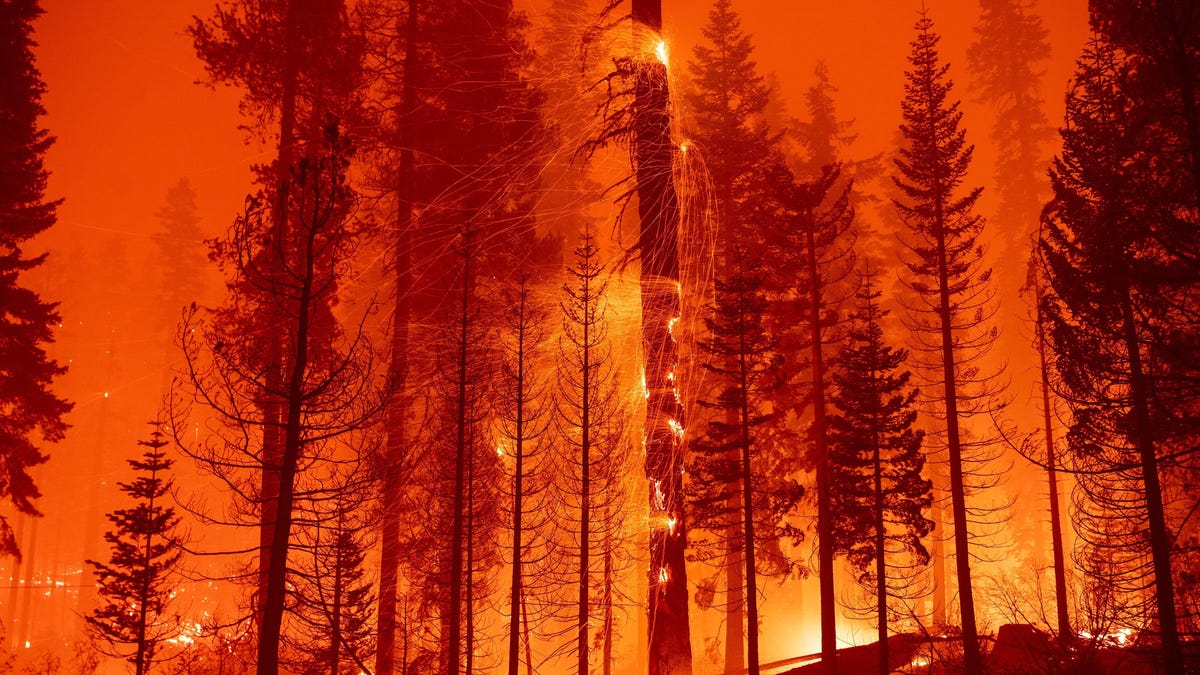
The West is burning in serious danger, even though the Gulf South is submerged. Fire officials placed residents of South Lake Tahoe under evacuation notice on Sunday due to the spreading of the Caldor Fire.
Advertisement
Two weeks ago, the fire raged as thousands of firefighters tried to put an end to it spreading eastward towards the resort town. Residents are now in a more dangerous situation as the conditions have worsened. Jeff Marsoleis (forest supervisor for El Dorado National Forest) told reporters on Sunday that crews thought they had the fire under control just a few days before. The fire is acting in ways that are more dangerous than expected.
He said today was a difficult day.
Five people were injured in the Caldor Fire, which also destroyed over 650 homes and other structures. Many of these were located in small communities on the Sierras' western slope. It is moving steadily towards Lake Tahoe, which spans Nevada and California. Residents on the California side of Lake Tahoe Basin were warned to evacuate.
Staff at South Lake Tahoes Barton Memorial Hospital evacuated all patients late Sunday night. The hospital tweeted that patients will be transferred to local partner facilities and their families will be notified. Bartons Emergency Department is still open for urgent health care.
It was difficult for the 3,500 firefighters who were trying to fight the flames. Some parts of the terrain were so uneven that firefighters had to carry fire hoses from Route 50 by hand to extinguish high-winded spot fires. These challenges are so severe that the National Interagency Fire Center called in the army to provide support. 200 soldiers will be deployed to help with firefighting operations beginning Monday.
The region is also being choked by smoke from the fires. The air quality is declining, and some areas are experiencing extremely high levels of pollution.
In a tweet, the agency stated that the smoke from wildfires had caused poor air quality in the region, increasing the risk of developing smoke-related diseases. Over the past week, monitoring stations recorded air quality levels above 600 several times. This is well above the dangerous threshold of 300. The Environmental Protection Agency considers anything above 600 a high-level warning sign of emergency conditions.
Advertisement
It's possible that the worst is yet to come. Northern California could be facing critical red flag fire conditions from Monday night to Tuesday. These conditions indicate that the fire could quickly spread. The humidity could drop to the single digits, while winds can gust up to 35 mph (55.6 kph). This, combined with high temperatures in the 80s and 90s will cause fires to flare up, making firefighters' jobs more difficult.
One of the many large fires blazing across California is the Caldor Fire. The Chapparal Fire, located in the La Cresta region, southeast of Los Angeles was so intense that it caused a fire swirl, causing evacuations. Nearly 90 large fires are currently burning in the west U.S., as well as dozens more in Canada.
Advertisement
Extreme heat and drought conditions caused by the climate crisis have contributed to the devastating fire season. The Drought Monitors' latest report shows that nearly 95% West is currently in some type of drought. California is one of the most severely affected states with almost half the Golden State experiencing extreme drought conditions.
The inferno is a horrifying illustration of the effects of climate change. It also warns that we need to invest in adaptation measures as well as halt the use of fossil fuels that cause global warming. California is often seen as the leader in U.S. climate action. However, it has recently approved thousands of new oil- and gas drilling permits. This won't solve the problem. To prevent even more fires in the future, the state and the entire world must make major changes.
